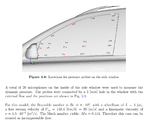Hello guys.
I'd like to copy and paste my post from another forum that I believe is very pertinent with this post
"Coming from a Challenger SP16 where aerodynamics wasn't the "big thing "to do,
I bought a GT 18 PP with supercharger.
I'm definitely ok with the power but the reason why I bought this car is cause I do track day (ONLY ROAD COURSE) often. THAT'S THE REASON WHY GOT MY MUSTANG! ( not the only one actually
 )
)
So here is the question.
What are the best after market "aero gadget to install in a GT18 PP (NO MAGNARIDE) ?
I MEAN WITH REAL DOWNFORCE FUNCTION.
IMO the focus should be on:
1.better front splitter
2.air dams under for better air flow ( away from the front tires and canalize air on the diffuser
3.side skirts.
4. flat floor
5. diffuser
6. rear WING or SPOILER
I have 3 months to improve m Knowledge of this car and where to buy after market things.
PLEASE SHARE YOUR THOUGHTS and advice.
thanks
Fly
Ps. i'm italian ,sorry for my english

I'd like to copy and paste my post from another forum that I believe is very pertinent with this post
"Coming from a Challenger SP16 where aerodynamics wasn't the "big thing "to do,
I bought a GT 18 PP with supercharger.
I'm definitely ok with the power but the reason why I bought this car is cause I do track day (ONLY ROAD COURSE) often. THAT'S THE REASON WHY GOT MY MUSTANG! ( not the only one actually

So here is the question.
What are the best after market "aero gadget to install in a GT18 PP (NO MAGNARIDE) ?
I MEAN WITH REAL DOWNFORCE FUNCTION.
IMO the focus should be on:
1.better front splitter
2.air dams under for better air flow ( away from the front tires and canalize air on the diffuser
3.side skirts.
4. flat floor
5. diffuser
6. rear WING or SPOILER
I have 3 months to improve m Knowledge of this car and where to buy after market things.
PLEASE SHARE YOUR THOUGHTS and advice.
thanks
Fly
Ps. i'm italian ,sorry for my english

















